How to Build an Ecommerce Sales Funnel For Maximum Conversions
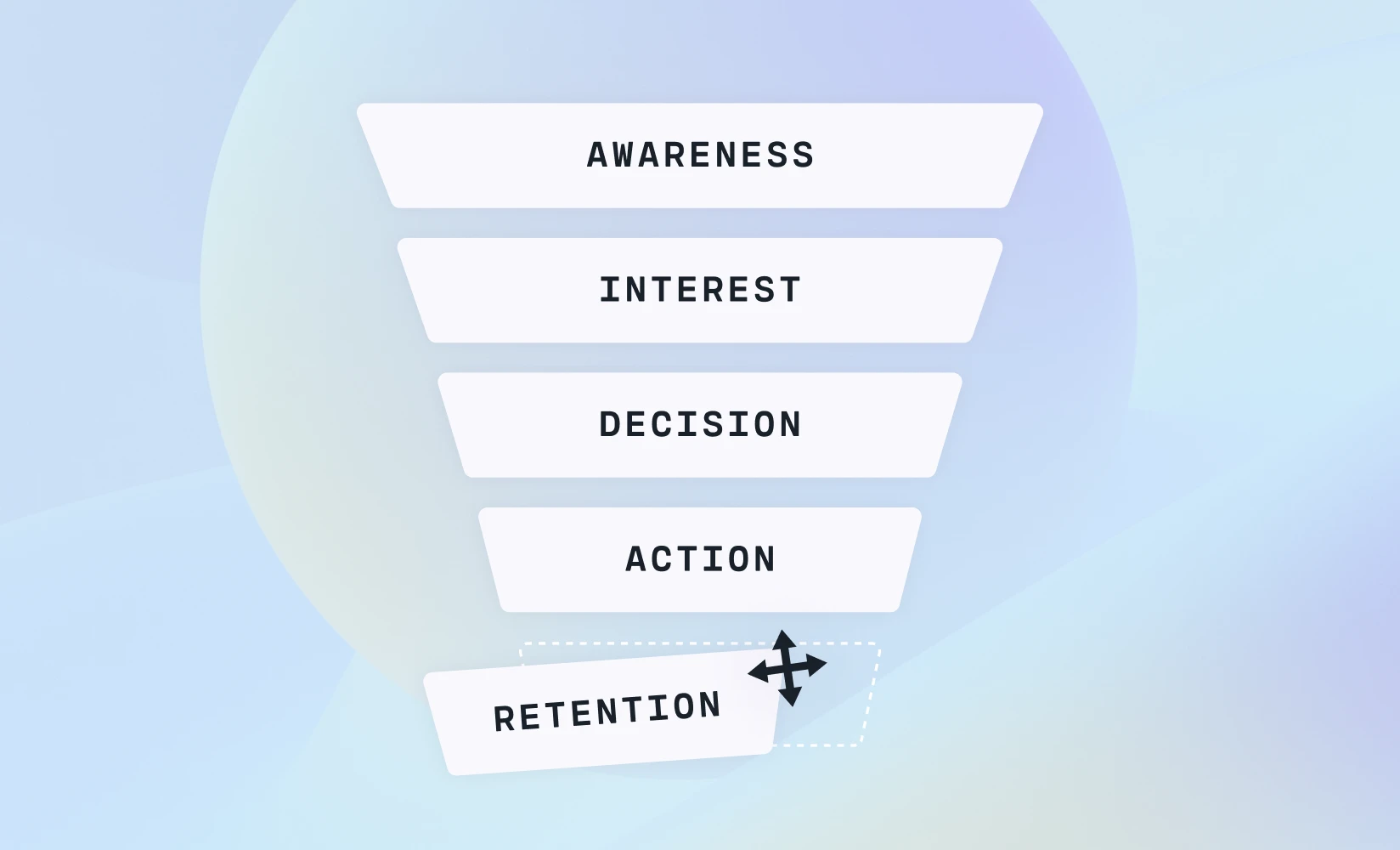
There’s no magical secret to an ecommerce business success. It depends on numerous factors and happens only when you work hard for it.
Yet, to understand what particularly should be done to drive sales, it’s absolutely necessary to comprehend your customers’ behavior, desires, and concerns.
This is when the ecommerce sales funnel comes into play.
It helps thoroughly study each stage a customer goes through making purchases at your website and increase revenue without turning to ecommerce conversion rate optimization services.
We’ll explain in detail how to build a sales funnel most efficiently.
We’ll discuss:
#cta-visual-pb#<cta-title>Optimize your sales funnels<cta-title>Use Shogun Page Builder to craft the perfect sales funnel and drive sales.Start optimizing for free
Understanding the ecommerce sales funnel
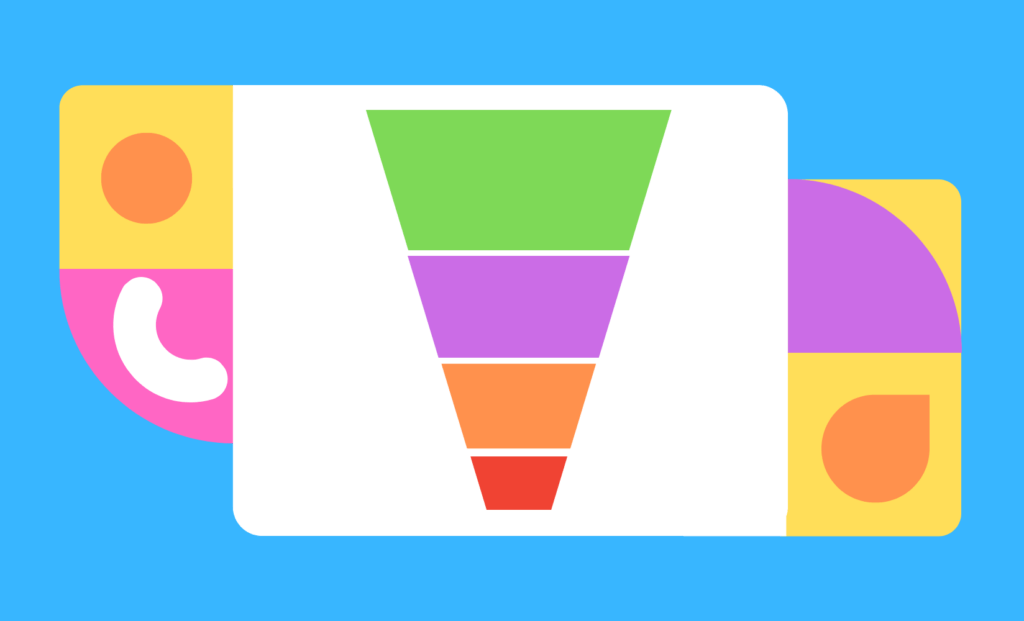
At its core, the ecommerce sales funnel is a roadmap that spells out a customer’s journey from being a mere bystander to becoming a fan.
Think of it as a system that funnels in potential customers, warms them up, and eventually wins them over to the point of purchase and beyond.
The ecommerce funnel has five stages: awareness, interest, decision, action, and retention.
Each stage of the sales funnel serves a specific purpose, and understanding these nuances helps tailor your approach.
So, when setting up shop online, it’s not about creating the widest net and hoping for the best. It’s about reeling customers in, step by step, and ensuring they stick around.
You’ll need to delve into your customers’ psyche to get a handle on this.
What makes them tick? Why do they hang back? At which point do they jump in with both feet? By gearing up with the right strategies, you’re not just selling a product but crafting an experience.
And in today’s cutthroat digital landscape, these experiences set you apart, allowing your brand to shine through and stand out from the crowd.
So, as you venture further into ecommerce, remember: it’s not just about moving products off the shelves.
It’s about building relationships, fostering trust, and turning casual browsers into lifelong customers.
5 Stages of the ecommerce sales funnel
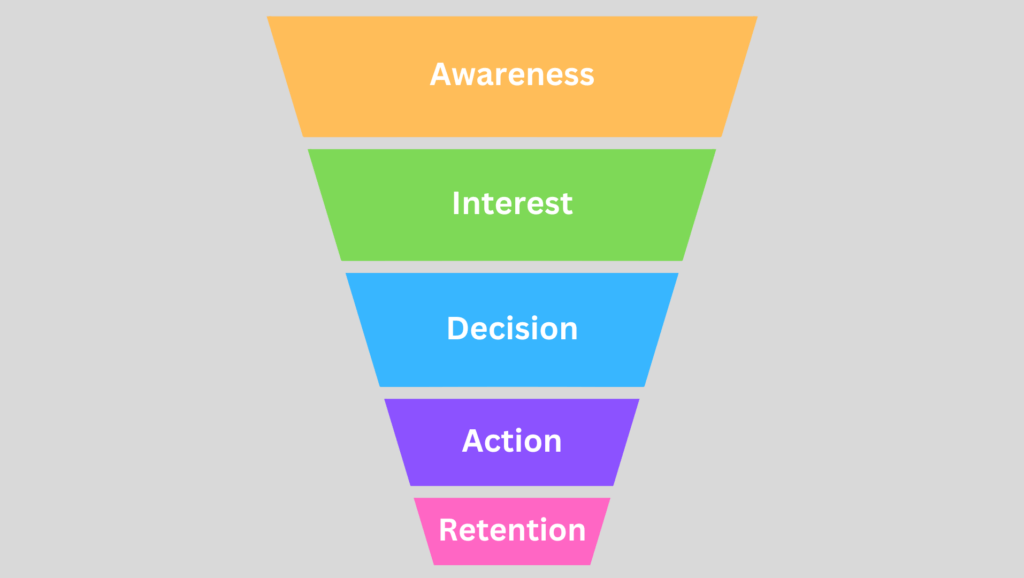
Navigating the twists and turns of ecommerce is hard.
But when broken down into distinct sales funnel stages, it all starts to fall into place. Let’s dive deep into these stages, unraveling the ins and outs to give you a leg up in your ecommerce endeavors.
Awareness stage
Picture this: someone out there stumbles upon your brand for the very first time.
Perhaps they’ve chanced upon an ad or had a friend drop your name in a conversation. This is the point where curiosity gets piqued.
They’ve got a hint of what you offer, but they’re not fully clued in yet.
Your mission? To put your best foot forward and make that memorable first impression. Here are some efficient tips for this stage:
Dive deep into keyword research
When potential customers fire up their search engines, ensure you’re the beacon they’re drawn to.
By honing in on the right keywords, you carve out a space for your brand in the vast digital landscape.
Leverage influencer partnerships and social media campaigns
Team up with key personalities in your niche.
With the right influencer partnerships and punchy social media campaigns, you can get the word out and amplify your reach. It’s all about piggybacking on their credibility and tapping into their follower base.
For example, Clinique actively collaborates with influencers to promote their products.
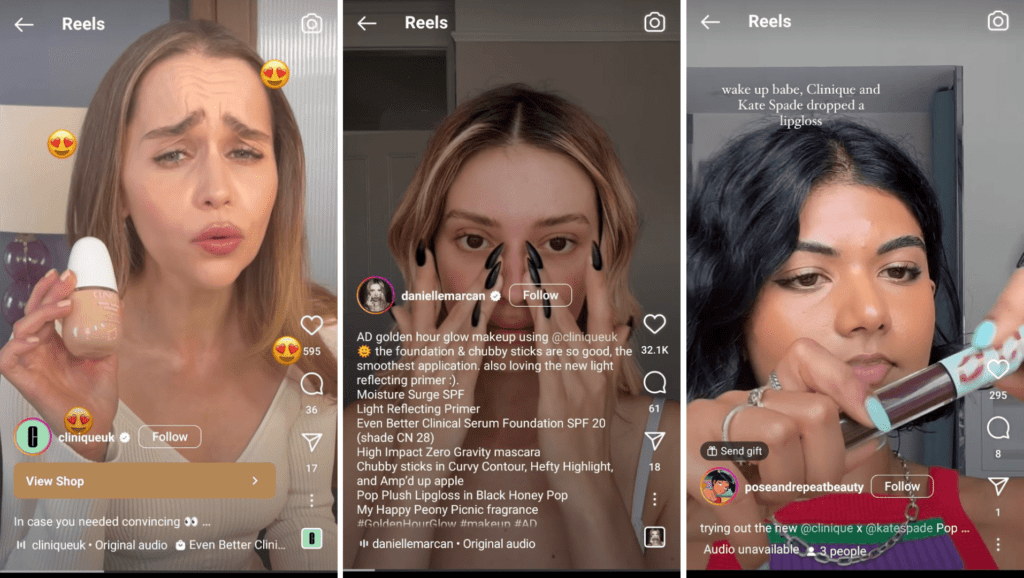
Interest stage
Now that you’ve caught their eye, it’s time to reel them in.
At this juncture, potential customers are doing more than just window shopping. They’re digging around, soaking up information, and trying to figure out if what you’re serving up resonates with their needs or desires.
This is your golden opportunity to lay your cards on the table and show them what sets you apart from the crowd.
Here’s how you can ignite interest:
Create engaging content in various formats
Don’t just churn out simple articles. Dive deep into topics that resonate with your audience.
Turn over every stone, offer fresh insights, and position yourself as the go-to expert in your niche. For example, videos have an uncanny ability to draw people in.
Whether it’s a behind-the-scenes look, a product demo, or an insightful tutorial, make sure your videos don’t just inform but entertain as well.
You may also benefit from breaking down complex topics and serving them up in an infographic format.
Use email marketing to nurture leads
Segment your email list and craft tailored messages that speak directly to the recipient’s needs or interests.
Check-in with leads, keeping the conversation alive.
Maybe they checked out a product but didn’t make the purchase. Gently nudge them, reminding them what caught their eye in the first place. Throw in a compelling customer story, showcase a recent blog post, or spotlight a new product.
Keep things fresh, ensuring your subscribers always look forward to what’s landing in their inbox.
Improve product and landing pages
Refresh your product descriptions and images. Ensure the photos are high-res and attention-grabbing.
Experiment with angles, lighting, and even interactive elements like 360-degree views to truly bring products to life.
Streamline the user journey by cutting out any friction points on your landing pages. Is your call to action clear? Can visitors quickly find what they’re looking for? Lead them seamlessly towards taking action.

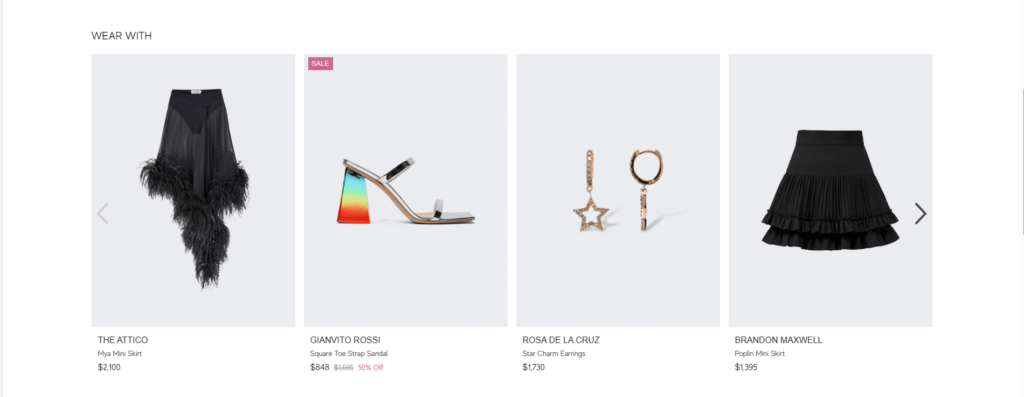
Decision stage
At this point, potential customers are on the brink, teetering on the edge of making that purchase.
They’ve sized up their options and mulled over the pros and cons. Will they, or won’t they? This is where you pull out all the stops, sweetening the deal and nudging them towards that all-important ‘yes.’
Implement urgency factors like limited-time offers
Time-sensitive deals can really light a fire under potential buyers.
Put forth a tempting offer, and then watch as the ticking clock does its magic, nudging shoppers towards a swift purchase. As they hover over the ‘buy’ button, sweeten the deal with a last-minute surprise.
Maybe it’s a small discount on a complementary product or a bonus item tossed into the mix.
You can also tap into the fear of missing out (FOMO) by making stock levels visible and emphasizing scarcity when it’s genuine.
Showcase customer reviews and testimonials prominently
Real words from real customers pack a punch.
Carve out prime real estate on your product pages to showcase rave reviews, ensuring prospects don’t have to dig around to hear the good word.
Dedicate a whole section or even a page where potential buyers can dive deep, sifting through stories, experiences, and feedback from those who’ve walked the path before them.
Amplify trust by showcasing reviews not just from your site but from external platforms as well. This transparency beefs up credibility and gives a well-rounded view of customer sentiment.

Action stage
This is where all the hard work pays off. The shopper, now convinced and excited, takes the plunge.
They’ve added items to the cart, checked out, and are eagerly awaiting their purchase. But remember, while this stage culminates in a sale, the journey doesn’t end here.
Streamline the checkout process
If there’s one thing that can get under a shopper’s skin, it’s a long, convoluted checkout.
Pare it down, stripping away any unnecessary steps or distractions. The faster your customers can move from the cart to completion, the better.
Offer a guest checkout option, and if there’s an issue—like an expired credit card or an out-of-stock size—highlight it straight away.
Offer attractive deals
If you have an opportunity, toss in free shipping—it’s a perk that often tips the balance between cart abandonment and conversion.
When the customers are about to check out, surprise and delight them with an unexpected discount, especially for those first-time visitors.
A pleasant surprise at the last stage can seal the deal and leave a good impression. See how Bodum highlights the discounts and shipping terms at the checkout.
You can also entice shoppers to add just a bit more to their cart by offering bundle deals, upsells/cross-sells, or “buy one, get one” offers. Not only does this boost sales, but it also gives customers a sense of added value.
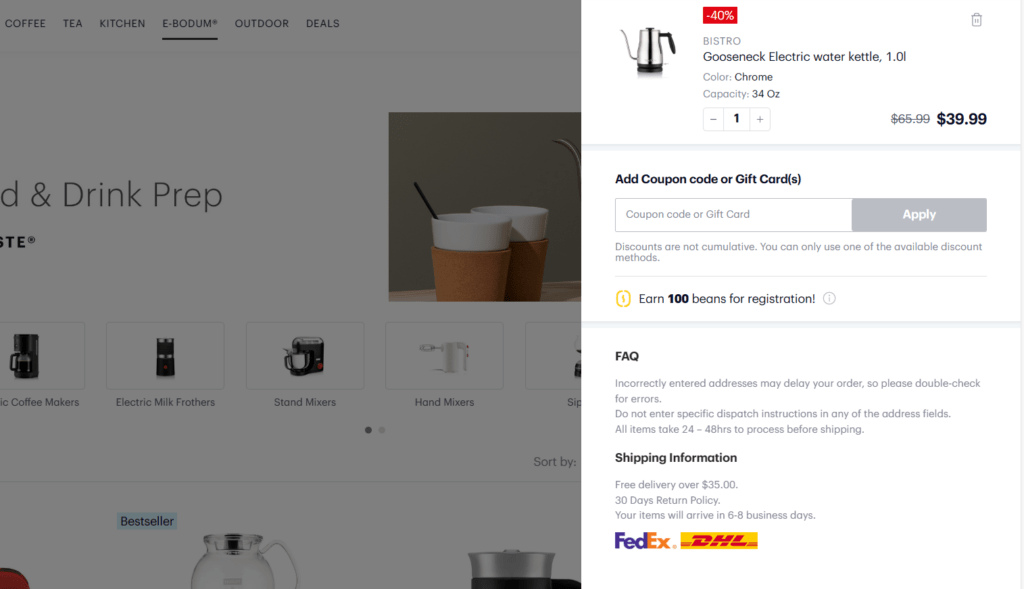
Retention/post-purchase stage
This is where most brands stop, but not you.
After that initial sale, it’s time to turn up the charm. By checking in, offering support, and ensuring customers are head over heels with their purchase, you set the stage for repeat business.
The main objection at this stage is to keep the conversation going, turning fleeting transactions into lasting relationships.
Regularly reach out with personalized offers
After the purchase, don’t just fade into the background.
Drop in with tailored offers that remind them of their smart shopping choice. Dish out newsletters, blogs, or videos that add value to their purchase, making sure each touchpoint solidifies their connection to your brand.
Another good strategy to use is to check in with satisfaction surveys. This way you can engage with customers and get feedback to improve your brand.
Create a loyalty or rewards program
By setting up a loyalty program, you’re rewarding repeat purchases and turning your customers into VIPs.
Every point, badge, or level-up becomes another reason for them to stick around. Try to think beyond just discounts.
How about early access to sales? Maybe a sneak peek at new products? The little things can often pack the most punch, turning casual shoppers into brand evangelists.
Leverage referral marketing
Word of mouth marketing can work wonders.
Encourage your satisfied customers to bring in their friends, and sweeten the deal with discounts, freebies, or other incentives.
When customers sing your praises, it’s bound to drum up more business.
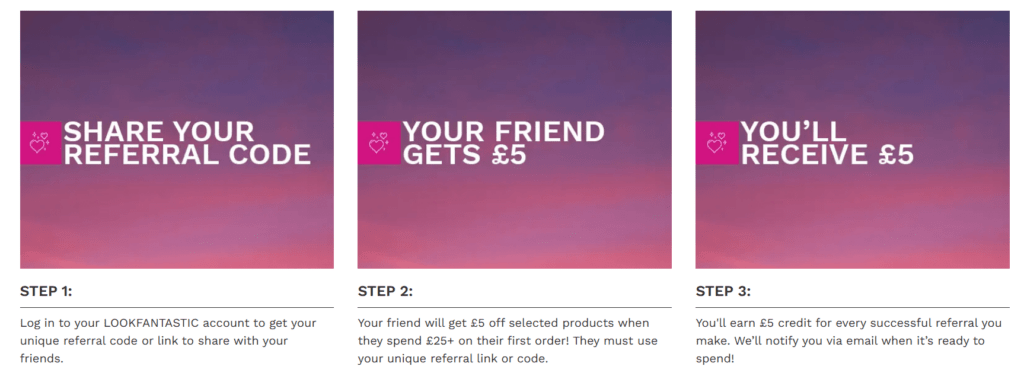
#cta-visual-pb#<cta-title>Get more sales with optimized product pages<cta-title>Easily create product pages with Shogun Page Builder to drive sales.Start optimizing for free
Tools and technologies for building your sales funnel
Building and analyzing an ecommerce sales funnel requires tools that can assist in various stages, from driving traffic to your site to post-purchase engagement.
Below are some tools categorized based on their functionality:
Website and landing page builders
The foundational bedrock of any online store, these platforms enable you to craft, customize, and launch your ecommerce site.
They’re like your virtual storefronts, each with its unique bells and whistles.
- Shopify. A renowned platform that caters to both beginners and seasoned sellers. Its user-friendly interface, plethora of themes, and expansive app store allow you to whip up a site tailored to your brand’s vibe.
- BigCommerce. Ideal for businesses looking to scale up. With an emphasis on customization, BigCommerce boasts advanced SEO features, a variety of payment gateways, and multi-channel selling capabilities.
- Shogun Page Builder. For Shopify and BigCommerce stores, there’s no better way to build store pages and landing pages. With an intuitive, drag-and-drop visual editor and cutting edge AI tools for content creation, design, and optimization, you can quickly launch your pages with confidence.
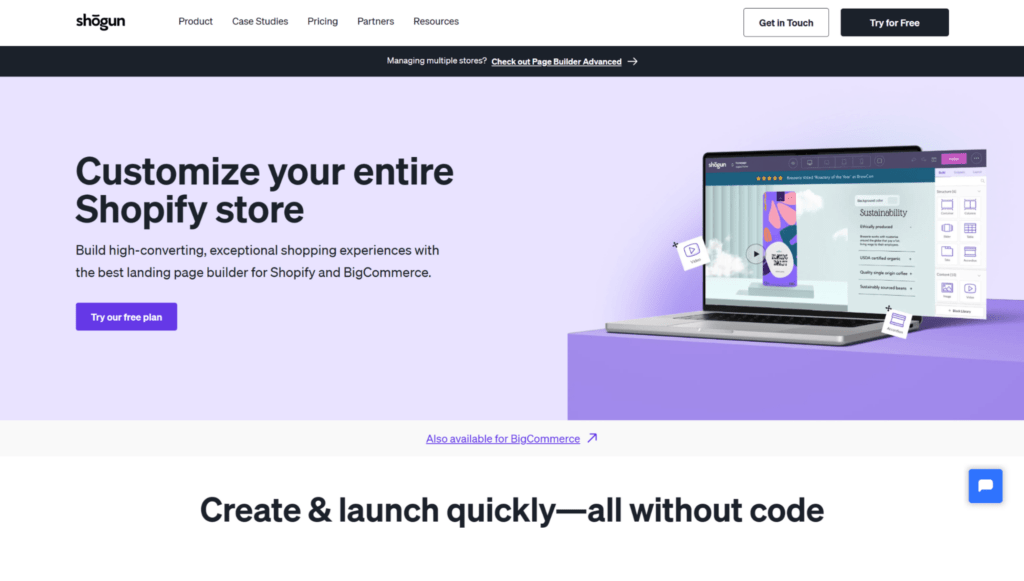
Traffic and awareness tools
Think of these as your virtual loudspeakers. They amplify your presence, drawing potential customers in and boosting brand awareness.
- Google Ads. A powerhouse in online advertising, allowing you to strategically position your ads on the Google search engine and its partner sites based on keywords and user behavior.
- Facebook Ads Manager. A tool that lets you tap into Facebook’s vast user base, segmenting and targeting your ads based on demographics, interests, and behaviors.
- SEMrush. Beyond just an SEO tool, it offers competitive intelligence, keyword research, and site audit capabilities, helping you focus on optimization opportunities.
- Ahrefs. Renowned for its extensive backlink database, it helps you keep an eye on your backlink health, scout out competitors, and unearth keyword opportunities.
Email marketing and automation tools
These platforms help you keep the conversation going, nurturing leads and fostering relationships through targeted email campaigns.
- Mailchimp. An industry stalwart, it offers a user-friendly interface, automated campaigns, segmentation options, and in-depth analytics to measure campaign performance.
- Klaviyo. Tailored for ecommerce, Klaviyo focuses on data-driven performance, allowing you to segment your audience meticulously and trigger emails based on user behavior.
- Drip. Specializing in ecommerce CRM, Drip shines in personalization, crafting email experiences that resonate with individual subscribers.
Analytics and tracking tools
These are your virtual magnifying glasses, giving you a close-up view of user behaviors, preferences, and interactions with your site.
- Google Analytics. This free tool offers insights into website traffic, user behavior, conversion paths, and much more, making data-driven decisions a breeze.
- Hotjar. Moving beyond traditional analytics, Hotjar offers visual heatmaps, user session recordings, and feedback tools, letting you see through your visitors’ eyes.
- Mixpanel. Specializing in event-based tracking, it lets you dissect user journeys, analyzing every interaction and touchpoint to optimize the user experience.
Ecommerce sales funnel metrics
Here are some of the metrics that should be tracked when building a successful ecommerce conversion funnel:
- Total visits
- New vs returning visitors
- Traffic sources
- Page views
- Bounce rate
- Average session duration
- Pages per visit
- Conversion rate
- Average order value (AOV)
- Cart abandonment rate
- Lead conversion rate
- Cost per lead (CPL)
- Sales conversion rate
- Cost per Acquisition (CPA)
- Customer lifetime value (CLV)
- Click-through rate
- Net promoter score (NPS)
- Churn rate
- Customer satisfaction (CSAT) score
- Product return rate
- Referral traffic
- Return on ad spend
Conversion optimization tools
The key players in fine-tuning your site’s performance, ensuring visitors don’t just browse but take desired actions.
- Optimizely. The go-to for A/B and multi-variant testing, it lets you experiment with site elements, measuring and optimizing for best performance.
- HelloBar. A lead capture tool that provides a range of popups with the goal of turning site visitors into leads, subscribers, and customers.
- TrustPilot. A customer review platform that boosts brand trust by showcasing authentic customer feedback and ratings, positively influencing purchasing decisions.
Retargeting and remarketing tools
These tools ensure potential customers who’ve shown interest but didn’t convert are reminded of your products or services as they browse other parts of the web.
- Google Remarketing. Integrating with Google Ads, it serves tailored ads to users who’ve previously visited your site, keeping your brand top-of-mind.
- Criteo. Leveraging machine learning, Criteo delivers personalized ads to users, optimizing for the highest engagement and conversion.
- AdRoll. Beyond just retargeting, it dives deep into audience targeting and attribution, ensuring you reach the right people with the right message.
Customer relationship management (CRM) tools
These platforms serve as your relationship managers, organizing and analyzing customer interactions to enhance relationships and drive sales.
- HubSpot. An all-in-one platform encompassing sales, marketing, and service tools. With its inbound methodology, it focuses on attracting, engaging, and delighting customers.
- Salesforce. A cloud-based solution catering to businesses of all sizes, it offers sales forecasting, lead generation, and multiple integrations to centralize customer interactions.
Post-purchase & retention tools
Dedicated to making sure customers come back for more, these tools focus on rewarding loyalty and fostering long-term relationships.
- LoyaltyLion. This platform enables you to craft custom loyalty programs, offering points, rewards, and incentives to boost customer retention.
- Smile.io. Emphasizing rewards, referrals, and community, Smile.io provides tools to turn one-time buyers into loyal advocates.
Funnel analysis & visualization tools
Giving you a view of your sales funnel, these tools pinpoint bottlenecks, drop-offs, and opportunities, guiding your optimization strategies.
- Funnel.io. Funnel.io rolls all your advertising data into one platform, helping you get a handle on your performance across multiple channels. You can tap into real-time data, cut down on manual reporting, and quickly understand how leads are navigating your sales funnel.
- Funnelytics. The drag-and-drop canvas gives you the freedom to sketch out your funnel workflows while the icons and templates ensure it looks polished and presentation-ready.
Improve your sales funnel to boost your revenue
According to Hubspot, 48% of marketers prioritize the improvement of their sales funnel.
In a nutshell, while the digital landscape is ever-evolving, the essence remains the same: understand your customers, address their needs, and continually refine your approach.
Whether you’re just setting up shop or have been in the game for a while, the ecommerce funnel is a powerful blueprint to guide your efforts, ensuring that every click, every interaction, and every sale counts.
#cta-visual-pb#<cta-title>Boost conversions with Shogun<cta-title>Start using Shogun Page Builder to craft effective sales funnels.Start boosting for free

Alex Husar
Alex Husar is chief technology officer at Onilab. Working at the company for almost a decade, Alex has gained proficiency in web development, creating progressive web apps (PWAs), and team management. Alex constantly deepens his knowledge in various technological areas and shares it in his articles. He helps programmers overcome common challenges and stay updated with the latest web development trends.



